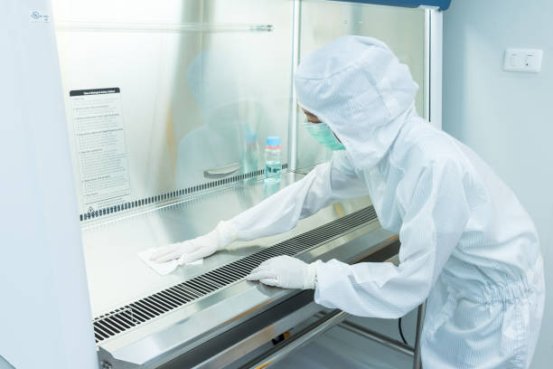Technology
Cleanroom Services: Ensuring Precision and Safety in Controlled Environments
In industries where even the smallest particles can cause major disruptions, cleanroom services are essential to maintain precise conditions and prevent contamination.
In industries where even the smallest particles can cause major disruptions, cleanroom services are essential to maintain precise conditions and prevent contamination.

Overview of Cleanroom Services
Cleanroom services encompass specialized procedures that sustain environments with extremely low levels of airborne contaminants. These services are vital in sectors where cleanliness directly impacts product quality and safety, including semiconductor fabrication, pharmaceutical production, and aerospace assembly. Skilled technicians use advanced cleaning techniques, chemical agents, and dedicated tools to maintain the necessary air and surface purity. Sophisticated air filtration systems also play a critical role in controlling particle accumulation.
Why Cleanroom Standards Matter
Strict adherence to cleanroom standards is crucial. Even minor contamination can compromise functionality in electronics or affect product safety in life sciences and biotechnology. Maintaining these standards reduces cross-contamination, prevents recalls, ensures regulatory compliance, and preserves client trust. Ultimately, rigorous protocols protect both products and organizational reputation.
Different Types of Cleanrooms
Cleanrooms are classified under ISO standards, defining maximum particle concentrations per cubic meter, from ISO 1 (most stringent) to ISO 9 (least strict). Examples include:
-
Semiconductor cleanrooms: Require extreme contamination control due to microscopic components.
-
Pharmaceutical cleanrooms: Sterility is critical to product integrity and patient safety.
-
Aerospace and defense cleanrooms: Precise assembly demands minimal particulate interference.
Understanding these categories helps in selecting appropriate cleaning protocols for specific industry requirements.
Essential Components of Cleanroom Function
Effective cleanroom operation depends on multiple integrated systems. HEPA filters remove airborne particles, while advanced air-handling units regulate temperature, humidity, and pressure to prevent uncontrolled airflow. Specialized cleaning products and techniques maintain particle-free surfaces without causing recontamination. Regular maintenance, environmental monitoring, and equipment calibration ensure accurate readings and prompt corrective action when needed.
Cleaning Procedures and Best Practices
Cleanroom cleaning follows a detailed, step-by-step approach to avoid compromising environmental integrity. Processes typically start with dry particle removal, followed by wet wiping with residue-free solutions. Cleaning agents are selected for compatibility with surfaces and required cleanliness levels. Some cases may use ionized water or antimicrobial treatments for sterilization, and disposable supplies prevent cross-contamination. Both manual and automated cleaning methods are used with thorough checklists to cover all areas.
Training and Safety for Personnel
Personnel undergo extensive training in contamination prevention, chemical handling, and proper PPE use. Correct gowning, entry/exit procedures, and tool handling are emphasized. Safety training also covers ventilation and protective measures when using cleaning agents. Regular refresher courses and certification updates ensure alignment with evolving best practices.
Industry Applications
Cleanroom services are critical in industries where contamination can lead to failures. In semiconductor manufacturing, stray particles can reduce yields and cause defects. Pharmaceutical and medical device production requires contamination control to protect product efficacy and patient safety. Aerospace and defense rely on cleanrooms for precise component assembly, while research labs use controlled environments for accurate, repeatable results.
Advances in Cleanroom Technology
Emerging technologies are enhancing cleanroom performance. ULPA filters surpass traditional HEPA filters, while IoT-based monitoring enables real-time environmental adjustments. Robotics reduce human error and minimize traffic in controlled spaces. New antimicrobial and easy-clean materials help maintain high cleanliness levels with fewer deep cleaning cycles.
Compliance and Certification
Adhering to ISO classifications and other international standards ensures credibility and regulatory approval. Routine internal and third-party inspections confirm contamination remains within limits. Detailed documentation of cleaning schedules, monitoring results, and training supports compliance and audit readiness, helping businesses maintain operational authorization.
Future Trends and Outlook
Cleanroom services will continue evolving with technology and stricter industry demands. Future developments will emphasize sustainability, automation, AI-driven predictive maintenance, and enhanced real-time monitoring, further reducing contamination risks and improving efficiency.
Conclusion
Cleanroom services provide a foundation for industries requiring exceptional environmental control. By combining specialized techniques, advanced technology, and rigorous compliance, cleanrooms ensure controlled environments consistently deliver the quality, safety, and reliability modern production and research demand.
How do you like this article?




